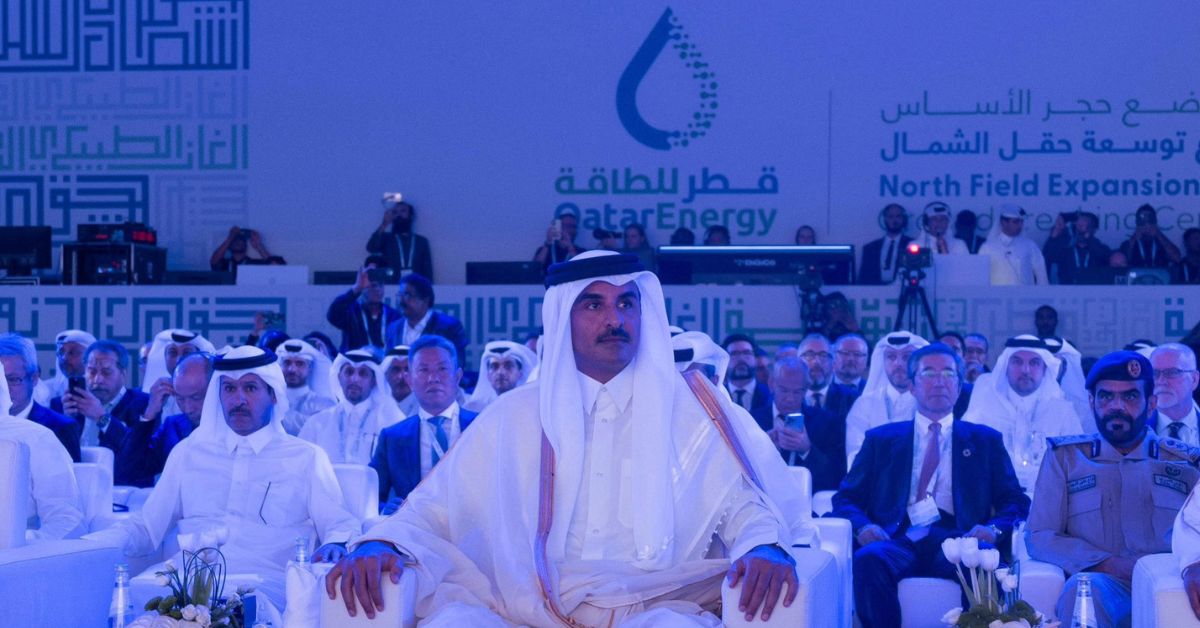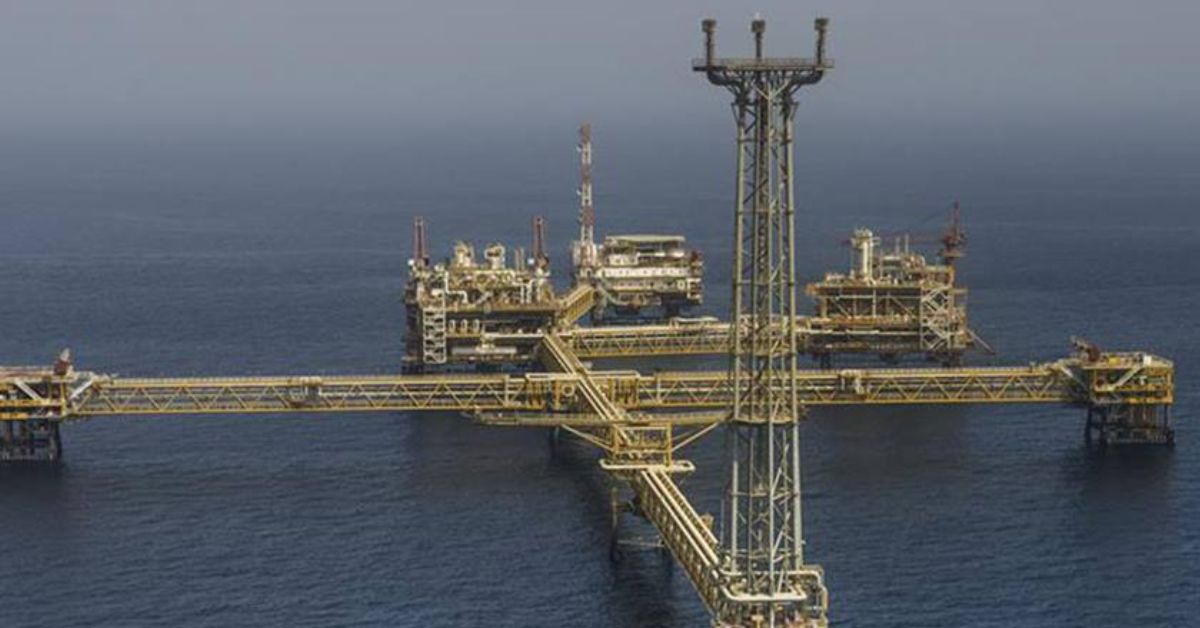DOHA — Qatar is rapidly advancing its efforts to become the world’s leading liquefied gas and energy powerhouse. It’s leveraging its vast experience and significant capabilities in this sector, which has long been the cornerstone of its economy.
This Qatari expansion in gas production is in step with the global surge in energy demand. This surge followed the broad economic recovery after the COVID-19 pandemic and the energy supply crisis sparked by the Russian-Ukrainian war, which halted Russian oil and gas exports to Europe.
On Tuesday, October 3, 2023, Doha initiated its plan to boost its liquefied gas production by 60 percent, aiming for 126 million tons per year by 2027. On this day, Qatar laid the foundation for an expansion project in one of the largest natural gas fields globally, commencing construction of an export terminal along the small Gulf state’s northeastern shoreline.
Qatar’s Emir, Sheikh Tamim bin Hamad Al Thani, graced the ceremonial event at Ras Laffan. “Today, we set the cornerstone for the North Field expansion project, aligned with our strategy to reinforce Qatar’s status as a top-tier global producer of liquefied natural gas,” Sheikh Tamim bin Hamad posted on the “X” platform (formerly known as Twitter). He emphasized that the project “further cements its leading role in satisfying the global energy demand.”
The North Field expansion project is bifurcated into two sections, east and south, marking the most extensive venture in the global liquefied natural gas industry’s history. The North Gas Field stands as the largest gas reservoir worldwide, boasting 50.97 trillion cubic meters. Spanning roughly 9,700 square kilometers, 6,000 of which fall within Qatar’s territorial boundaries, production commenced in 1989, following its discovery in 1971.
Reports suggest that the total global contracts to develop the Northeast Field amount to $28.75 billion. The firms involved in the project include Total Energies, Exxon Mobil, ConocoPhillips, Eni and Shell.
Qatar’s Minister of State for Energy Affairs, Saad bin Sherida Al-Kaabi, announced during the inauguration ceremony that the ambitious expansion is designed to elevate Qatar’s annual liquefied natural gas production capacity from 77 million tons to 126 million tons by 2026.
The Minister, who also serves as the Managing Director and CEO of Qatar Energy Company, elaborated that this initiative signifies a leap in Qatar’s energy leadership. It mirrors our long-term aspirations for maximizing natural resource investments and supplying the world with a more environmentally friendly energy source.
Al-Kaabi explained that the venture encompasses six vast production lines, each boasting an annual capacity of 8 million tons of liquefied natural gas. Four of these lines are part of the Northeast Field Expansion Project, with the remaining two belonging to the North-South Field Expansion Project. He emphasized that this sizable expansion will augment global liquefied natural gas supplies by 48 million tons each year.
Highlighting the timing, he remarked that this increase is pivotal as natural gas assumes an essential position in the global energy portfolio. This is especially true in a world grappling with geopolitical shifts and a pressing need for clean energy solutions that resonate with international environmental targets.
He further detailed that the project is expected to yield roughly 200,000 barrels per day of liquefied petroleum gas (comprising propane and butane), about 450,000 barrels per day of condensates, and significant volumes of helium and sulfur gas.
So, what implications might this have for Qatar’s economy?
Largely driven by gas export revenues, which totaled $132 billion last year, Qatar has emerged as one of the world’s wealthiest nations. With current valuations, the GDP per capita surpasses $84,000.
Such returns have invigorated the nation’s sovereign wealth fund, pushing its value to an estimated $450 billion. They’ve also catalyzed private-sector growth and fortified Doha’s prowess in actualizing its foreign policy objectives.
Yet, a report released the previous year by the International Federation of Oil and Gas Producers forecasted that Qatar would ascend to global prominence in liquefied gas production and exports by 2026. The North Field project’s substantial augmentation of production was pinpointed as a primary driver of this growth.
The International Energy Agency (IEA) noted in a March 2022 report that the North Field boasts an estimated 51 trillion cubic meters of natural gas, alongside approximately 50 billion barrels (7.9 billion cubic meters) of natural gas condensate.
A 2022 article in the British publication, Financial Times, suggested that ramping up production from the North Field is projected to stimulate a 40 percent surge in the Qatari economy upon the commencement of production.
Beyond its positive economic ramifications for Qatar, this uptick in production is pivotal in ensuring a steady supply of liquefied natural gas. This is essential given the escalating global energy demand, driven in part by the world’s steadily increasing population.
The landscape of LNG markets underwent a seismic shift in the aftermath of the Russian-Ukrainian conflict in February 2022. With disruptions in traditional supply routes, European consumers acquired record quantities of liquefied natural gas, as Russia curtailed its pipeline gas exports to EU clientele. Consequently, this spike in European demand escalated LNG spot prices on a global scale, thereby diverting gas from Asian buyers.

At the 2023 LNG Conference in Vancouver in July 2023, the Qatari Minister of Energy proclaimed that by 2029, Qatar will constitute roughly 40 percent of the world’s fresh LNG output.
“Some contend that gas will become redundant by 2050,” Al-Kaabi remarked. “In my perspective, however, we’ll see a growing need for it.” He added, “Gas is indispensable as a foundational support for wind and solar energy. After all, the sun isn’t always shining, nor is the wind consistently blowing.”
Al-Kaabi emphasized that while the Qatar Energy Company is betting long-term on global liquefied natural gas demand, the emphasis remains on cost-effective production with minimal environmental repercussions.
The global tussle for dominance in energy markets is intensifying. In this context, Qatar emerges as a beacon in the sector. The nation has poured, and continues to channel, significant investments into gas production and export infrastructure. This is primarily because industrialized nations are on the hunt for dependable gas sources, and Qatar stands out as that trustworthy provider.
It’s worth highlighting that Qatar possesses a depth of expertise and acumen that many nations lack, especially in the domain of liquefied gas marketing and export. Given this, it’s anticipated that Qatar will solidify its grip on the European gas market in the forthcoming years, supplementing its existing stronghold in the Asian market.








